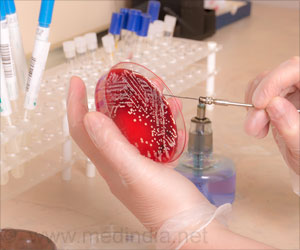Superbug MRSA arose first in nature long before the use of antibiotics in humans and livestock. About 60 percent of hedgehogs carry a type of MRSA called mecC-MRSA.

‘MRSA could have evolved in a battle for survival on the skin of hedgehogs and later, could have spread to the livestock and then to human beings through direct contact.’





"It was a natural biological process, and predates antibiotic use in medical and agricultural settings," they said. Hedgehogs carry a fungus and a bacteria on their skin, and the two are locked in a battle for survival. The researchers said that antibiotic resistance evolved in Staphylococcus aureus as an adaptation to having to exist side-by-side on the skin of hedgehogs with the fungus Trichophyton erinacei, which produces its own antibiotics.
The fungus secretes antibiotics to kill the bacteria and in response, the bacteria has evolved antibiotic resistance becoming methicillin-resistant Staphylococcus aureus, or MRSA.
In the study, published in the journal Nature, the team conducted hedgehog surveys from Denmark and Sweden and found that up to 60 percent of hedgehogs carry a type of MRSA called mecC-MRSA.
The new study also found high levels of MRSA in swabs taken from hedgehogs across their range in Europe and New Zealand.
Advertisement
Antibiotic resistance in bugs causing human infections was previously thought to be a modern phenomenon, driven by the clinical use of antibiotics. Misuse of antibiotics is now accelerating the process, and antibiotic resistance is rising to dangerously high levels in all parts of the world.
Advertisement
MRSA was first identified in patients in 1960, and around 1 in 200 of all MRSA infections are caused by mecC-MRSA. Due to its resistance to antibiotics, MRSA is much harder to treat than other bacterial infections.
The World Health Organization now considers MRSA one of the world’s greatest threats to human health. It is also a major challenge in livestock farming.
Source-IANS










